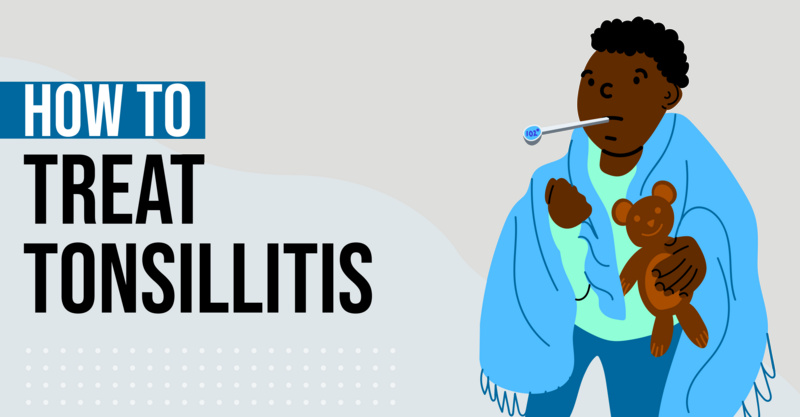Key Points
- Ear infections can cause significant pain and discomfort, with three main types: middle ear (otitis media), outer ear (swimmer's ear), and inner ear (labyrinthitis).
- Middle ear infections are more common in children, with about five out of six children experiencing at least one by age three.
- Swimmer's ear often occurs due to water trapped in the ear canal, while labyrinthitis is usually caused by a virus and is more common in adults.
- Ear infections may cause symptoms such as pain, fever, trouble hearing, dizziness, nausea, and vomiting, depending on the type of infection.
- Treatment options include over-the-counter pain relievers and home remedies, but more severe cases may require antibiotics or specialized care from an ENT doctor. Preventive measures include keeping ears dry, avoiding inserting objects into the ear, and maintaining clean air in the home.
What is an Ear Infection?
Although the ear is a small part of the body, it can cause an enormous amount of pain when infected. There are three main types of ear infections: infection of the middle ear (otitis media), infection of the outer ear (swimmer's ear), and infection of the inner ear (labyrinthitis), according to Healthline. Ear infections are the most common reason for pediatric doctor visits.
- A middle ear infection, also called otitis media, is an infection of the middle ear. Although individuals of any age can get this type of infection, it’s more common in children than adults. Five out of six children have at least one middle ear infection by age three, according to the National Institute on Deafness and Other Communication Disorders.
- Swimmer’s ear is commonly seen in children in the summer when kids spend a lot of time in the water. It’s caused by excess moisture in the ear leading to skin irritation, which lets bacteria or fungi get in.
- Labyrinthitis, which is usually caused by a virus, is the one type of ear infection that occurs more in adults than children. The Cleveland Clinic reports that labyrinthitis is more common in adults ages 30 to 60 years, and twice as common in people assigned female at birth than people assigned male at birth.
Ear Infection May Also Be Known as
- Earache
- Otitis media (this indicates a middle ear infection)
- Labyrinthitis (this indicates an inner ear infection)
- Swimmer’s ear (this indicates an outer ear infection)
Top 5 Ear Infection Causes
1. Water in Ears
An outer ear infection, commonly known as swimmer’s ear, is often a result of water trapped in the ear canal, according to Healthline. Trapped fluid—combined with irritated skin of the ear canal—can act as a breeding ground for bacteria or fungi, triggering an outer ear infection. Children, athletes, and frequent swimmers are more likely to develop swimmer’s ear.
2. Inserting Objects Into Ears
Some ear infections develop from scratches inside the ear canal, according to Mayo Clinic. Inserting any type of foreign object into the ear can cause an infection. Avoid inserting anything into your ear canals, including cotton swabs. Cotton swabs can strip away the ear wax, which forms a protective barrier in your ear canals. Keeping your ears especially clean might seem like a good way to avoid an infection, but using cotton swabs in your ears can actually make your ears more prone to infection. If you have a buildup of wax in the ear(s), see your pcp or local urgent care doctor who can safely remove the wax, and ask about the best way to prevent or treat wax buildup in the future.
3. Respiratory Disease and Disorders
Many people develop middle ear infections after having a cold or the flu. Allergies, sinus infections, and other conditions that cause sinus congestion can also trigger ear infections, according to Mayo Clinic. When your sinuses or ears become congested, mucus and other fluids might not drain well. These trapped fluids serve as a breeding ground for bacteria and cause infection.
4. Viral Infections
A variety of viral infections cause ear infections. Viruses are an especially common cause of inner ear infections, according to WebMD. Mild infections sometimes cause your inner ear to become inflamed, triggering symptoms of dizziness and nausea. Most viral infections clear up on their own, but some require antiviral medications, according to WebMD.
5. Bacterial Infections
Bacterial infections are responsible for many types of ear infections. While bacterial infections often clear on their own, antibiotics are sometimes necessary, according to Mayo Clinic. If you have a bacterial infection, you might have a fever or see fluid draining from your ears. Your doctor might notice pus or other fluid trapped inside your ear canal.
Possible Symptoms of Ear Infections
The following are symptoms ear infection symptoms as outlined by Healthline:
- Outer ear infection symptoms might include pain, redness, swelling, itching, and/or discharge from the ears.
- Middle ear infection symptoms might include pain, fever, trouble hearing, ringing in ears, discharge from ears, nasal congestion, loss of appetite, nausea, or trouble sleeping.
- Inner ear infection symptoms include dizziness, vertigo (a spinning sensation), nausea, and vomiting.
Ear Infection Diagnosis and Testing
If you or your child have symptoms of an ear infection, you have many options in terms of healthcare. You can see your primary care provider (PCP) or if your child is the patient, you can go to the pediatrician. You can also see an ear, nose, and throat (ENT) specialist (also known as an otolaryngologist). An urgent care center is another option where you can visit a healthcare provider for ear infection symptoms.
The healthcare provider will ask about your symptoms and check your ears—as well as look into your nose and throat. They may also listen to your chest with a stethoscope.
Can I go to urgent care for an ear infection?
An urgent care facility is an excellent option for children or adults with symptoms of an ear infection. Healthcare providers at urgent care facilities are well-equipped to diagnose and treat ear infections. You can also see a healthcare provider at an urgent care center if you have already been diagnosed with an ear infection elsewhere, and your symptoms are worsening or not improving.
Possible Ear Infection Treatment Options
Many ear infections clear up on their own without prescription medications, according to Mayo Clinic. Over-the-counter decongestants and pain relievers can often help symptoms until the infection clears on its own. Heating pads or warm compresses (keep an eye on the temperature, especially with little ones, to make sure it’s not too hot) can also provide some pain relief. Speak to your pediatrician before using at-home treatments on an infant or small child.
If your symptoms persist or become worse after a few days, see your doctor. You might need to take antibiotics to clear up the infection, according to Mayo Clinic. If your doctor prescribes antibiotics, be sure to take the medication as directed. Don’t skip doses, and don’t stop taking the medication without your doctor’s permission, according to WebMD. Finishing the full course of treatment prescribed by your doctor ensures that the infection clears—and also helps prevent antibiotic resistance (when antibiotics no longer work against certain bacterial infections).
According to the Mayo Clinic, commonly prescribed or recommended treatment for middle ear infections include:
- For a mild ear infection, the healthcare provider may suggest waiting a few days to see if the infection clears on its own, then if it doesn’t, an antibiotic will be started.
- For a more severe ear infection, an antibiotic is started right away. Commonly prescribed antibiotics include amoxicillin, Augmentin (amoxicillin/clavulanate), Omnicef (cefdinir), or Zithromax (azithromycin).
- Over-the-counter (OTC) pain relievers like Tylenol (acetaminophen) or Motrin (ibuprofen) can also be used for symptom relief. Children under 18 should not take aspirin due to the risk of Reye’s syndrome.
- Other home remedies include resting and drinking plenty of fluids.
Commonly prescribed or recommended treatment for swimmer’s ear infections include:
- Ear drops that contain an antibiotic and/or antifungal (with or without a steroid) for seven to 10 days
- Oral antibiotics for more severe infections
- OTC pain relievers
- Keeping water out of the ears
Commonly prescribed or recommended treatment for labyrinthitis include:
- Antihistamines such as Benadryl (diphenhydramine) or Antivert (meclizine)
- Home remedies such as warm compresses, saltwater gargles, and avoiding alcohol and smoke.
If you or your child frequently develops ear infections, your doctor might recommend seeing a specialist. An otolaryngologist, or an ENT doctor, specializes in diseases affecting the ears, nose, and throat, according to WebMD. These doctors can help determine the cause of your ear infections.
If your child often develops ear infections, they might have a problem with the size or shape of their Eustachian tubes. An ENT doctor might recommend a procedure that involves placing special tubes inside your child’s ears. These tubes help open up the Eustachian tubes and allow fluid to drain, which decreases the number of ear infections, according to Healthline.
Questions Your Doctor May Ask About Ear Infections
- How long have you experienced these symptoms?
- Do you have a fever?
- Do you feel dizzy?
- Have you recently injured your ear?
- How severe is your pain?
- Do you often get ear infections?
- Have you recently gone swimming?
5 Ways to Prevent Ear Infections
1. Keep Your Ears Dry
When swimming or participating in water sports, avoid getting water inside your ears, according to Mayo Clinic. If you or your child is especially prone to ear infections, it could be helpful to wear earplugs. Be sure to use new or sanitized earplugs each time to avoid introducing germs into the ear. Wash your hands before inserting them, and never share earplugs. Unsanitary earplugs can introduce germs into your ear canal and lead to infection, according to the Centers for Disease Control and Prevention (CDC).
2. Don’t Blow Your Nose Too Hard
If you have a cold or allergies, you might be tempted to keep blowing your nose to clear your sinuses. However, in some cases, blowing your nose too hard can force fluid and bacteria into the ear canal, according to WebMD. Blow your nose gently, one nostril at a time.
3. Don’t Insert Objects Into Your Ear
It’s never a good idea to put any foreign object, including cotton swabs, into your ear without a doctor’s permission. Putting an object into your ear can scratch your ear canal and lead to infection, according to Mayo Clinic.
4. Keep the Air in Your Home Clean
Irritants such as cigarette smoke, pollen, and dust can increase your likelihood of developing an ear infection, according to Mayo Clinic. If you smoke, try to quit. If someone else in the home smokes, ask them to do so outside. Ask your doctor about other devices or products that can help improve air quality in your home.
5. Limit the Use of Bottles and Pacifiers
Children who use pacifiers or drink from bottles while lying down are more likely to have chronic ear infections, according to Mayo Clinic. If your child often develops ear infections, ask your pediatrician or ENT doctor for advice. They might recommend propping your baby up when using a bottle or pacifier.
Frequently asked questions
What are the three main types of ear infections?
The three main types of ear infections are middle ear (otitis media), outer ear (swimmer's ear), and inner ear (labyrinthitis).Which age groups are most affected by each type of ear infection?
Middle ear infections are most common in children, with most experiencing at least one by age three. Labyrinthitis, on the other hand, is more common in adults, particularly those aged 30 to 60.What are the common causes of ear infections?
The top five causes of ear infections are water in the ears, inserting objects into the ears, respiratory diseases and disorders, viral infections, and bacterial infections.What are the treatment options for ear infections?
Treatment options for ear infections can range from over-the-counter medications to antibiotics, depending on the severity and type of infection.How can ear infections be prevented?
Preventative measures include keeping ears dry, not blowing the nose too hard, avoiding inserting objects into the ear, maintaining clean air in the home, and limiting the use of bottles and pacifiers for children.Are ear infections more common in children or adults?
Middle ear infections are more common in children, while inner ear infections are more common in adults.Can swimming cause ear infections?
Yes, swimming can cause ear infections, particularly outer ear infections, also known as swimmer's ear.Can respiratory diseases cause ear infections?
Yes, respiratory diseases and disorders are one of the top five causes of ear infections.
Solv has strict sourcing guidelines and relies on peer-reviewed studies, academic research institutions, and medical associations. We avoid using tertiary references.










